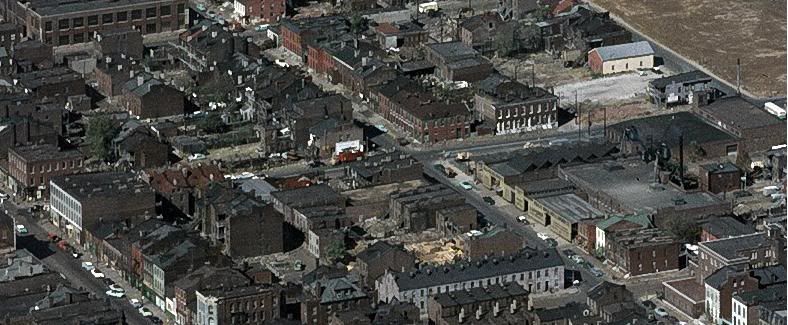This may sound harsh, but my estimation is that around 50% of what made St. Louis a "big city" on a continental scale is gone - not in land area but in quality and density. The most problematic issue is that the great crescent of pre streetcar walking rowhouse/tenement neighborhoods surrounding downtown is for all practical purposes, gone - neighborhoods like Soulard were more suburban (though anything
but today...). Again, these areas are not large in square mileage, but they were much of the old, deep soul of St. Louis City. The entire region seemed to effectively suffer a sort of stroke at the same time these neighborhoods were being cleared 1930s-1960s...how this might have been connected, i don't know. In any case, its almost like St. Louis declared total war on the row house. Its taken 50 years + to begin a real recovery.
Yes there were strong racial undertones, but my guess is that unlike Chicago and coastal cities, people stopped coming to St. Louis. Why come here anymore when there were much better paying jobs in Detroit and Los Angeles. There was no "backflow" of people to fill the voids that were created as the middle class moved outward (as they did everywhere). While St. Louis went way, way too far in demolition, the deterioration of the inner housing stock probably far exceeded anything on the coasts (other than parts of NYC). Not to mention, it looked just like the old places many immigrants had just left...with no better job prospects.
Here is the pruitt igoe area, 1.5 to 2 miles from the downtown riverfront, surrounded by blocks of attached housing with corner commercial, near the time it was built. The cleared area on the upper right is pruitt-igoe. Classic robust Northside with tons of commercial, alley houses, and contiguous density extending further than the old Southside ever did. Just too much squirrely mixed use for the "new" urban midwest. It was also still very dirty, too many years of cheap as dirt southern illinois coal. If they had only powerwashed everything in St. Louis first, before doing anything else...
 http://i148.photobucket.com/albums/s.../northside.jpg
http://i148.photobucket.com/albums/s.../northside.jpg
1972 - coming down on television...
 http://rjdent.files.wordpress.com/20...ion-color1.jpg
http://rjdent.files.wordpress.com/20...ion-color1.jpg
something far, far beyond st. louis was happening at this point, however. and st. louis has had to disproportionately work, buckling, breaking, but
somehow surviving under that tremendous weight ever since.



